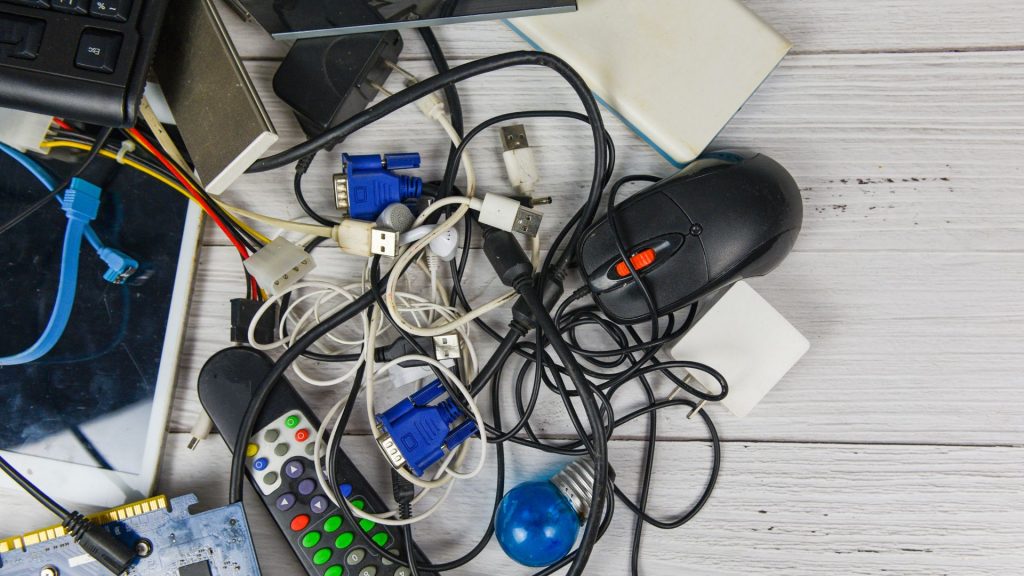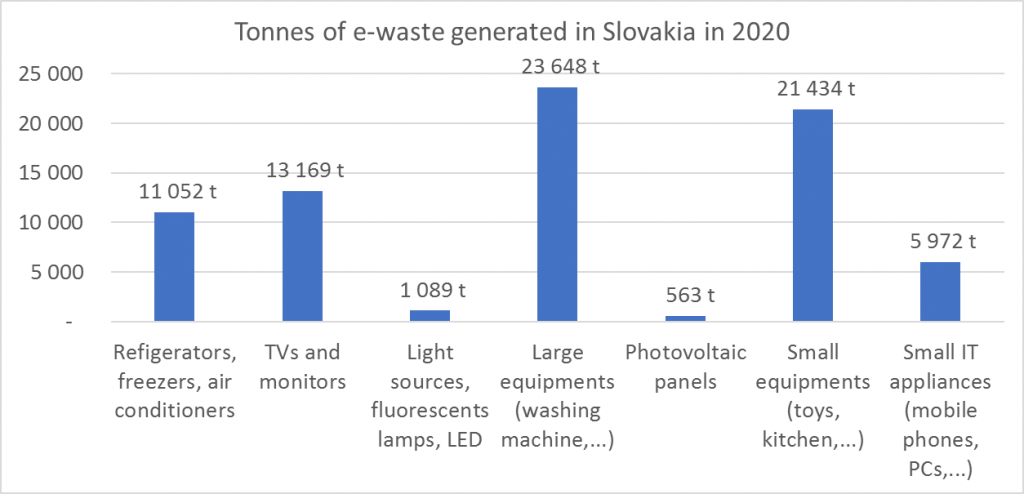Three Eiffel Towers of small e-waste every year
18. 10. 2023
In waste management, the smaller the waste, the more likely it is to end up where it shouldn’t. For example, in the wild, in public spaces, in mixed municipal waste, i.e. unused in a landfill or incinerator. This rule also applies, of course, to electrical appliances or e-waste. What are the main problems associated with the collection and recycling of small e-waste?
In general, the European Union has identified waste electrical and electronic equipment (WEEE) as one of its priority waste streams. The main reason for the increased interest in this waste stream is the very rapid growth of e-waste, which is being generated around three times faster than conventional municipal waste and can be considered the fastest growing waste stream. At the same time, e-waste is very complex and heterogeneous and contains large quantities of both recyclable materials and toxic substances. For these reasons, European legislation has therefore, on the one hand, banned the use of certain hazardous substances in electrical and electronic equipment since 2003 and, on the other hand, set targets for the collection and recycling of e-waste. All of the above statements also apply to small e-waste.

Estimation of the amount of small e-waste in Slovakia
More than 1000 types of electrical appliances are sold on the European market, a large number of which are smaller products. All electrical appliances up to the size of a microwave oven fall into this category. The Directive and the law divide e-waste into a total of 6 categories (see chart below). The amount of e-waste produced can be estimated by rather sophisticated methods. In this context, the European Commission issued Regulation 2017/699 in 2017, which sets out a common methodology for calculating the amount of e-waste produced. The following graph shows the results of the estimation of the amount of tonnes of e-waste in Slovakia in 2020. In terms of small e-waste, the weight of annual production in Slovakia is approximately equal to the weight of 3 Eiffel Towers.

It is certainly interesting to note that small e-waste represents approximately 40% of the total annual production of e-waste by weight. In units, this proportion is even higher. We estimate that approximately 45 million pieces of e-waste were generated in Slovakia in 2020, with small e-waste accounting for approximately 70%. Thus, each household produced approximately 19 different electrical appliances that became waste in 2020.
The logistics and collection system for small e-waste must logically reflect the fact that collecting one tonne of used mobile phones requires considerably more energy than, for example, collecting waste microwave ovens. The following chart compares the estimated quantities of waste microwave ovens and mobile phones for the Slovak market in 2020.


Red – white containers as the optimal solution for the collection and recycling of millions of small electrical waste
According to the United Nations University, four years after the adoption of the Directive, in 2007, Europe generally had a very low collection rate of small e-waste, close to zero. In Slovakia, this situation has changed significantly for the better over the last 16 years thanks to projects such as the red – white containers of the ASEKOL collective system. The red – white containers are a complement to the sorted collection of municipal waste such as paper, glass, plastics, metals and beverage cardboards.
Consumers currently have 330 containers in which they can easily and environmentally dispose of their small e-waste. Opinion polls that focus on public or consumer attitudes towards waste sorting and recycling have repeatedly shown that the availability and overall friendliness of the set-up of a system for collecting and recycling sorted waste (in our case, small e-waste) is crucial to the effectiveness and success of such a system. The availability of red – white containers for the collection and subsequent recycling of small e-waste is increasing year by year. The total amount of e-waste collected under the red – white container scheme is also increasing year by year. In 2022 alone, over 263 000 kg of small e-waste was collected and recycled in this way.
The fact that small e-waste does not end up in municipal waste and subsequently in landfill has a significant positive impact on the quality of ecosystems, reducing potential human toxicity, water ecotoxicity and potentially reducing eutrophication.